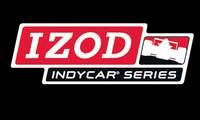Motorsports Commentary - Ground Hog Day 2012
 |
by Rick Carlton - Senior Motorsports Editor
Austin, May 12, 2012: This commentary started as a technical treatise on IndyCar's recent rules flap, involving the 2012 V6 engine and its single versus double-turbo configuration. But, when I got into the issue more fully, there wasn't much to talk about. This conclusion was particularly borne out by a number of other journalists had already done a excellent job of explaining the vagaries of the Area/Radius (A/R) turbo inlet, and its engineering impacts on power, torque and throttle response, followed by the subsequent 'no-decision' that upheld IndyCar's turbo cover waiver in favor of Honda. However, as I worked through my original research, it occurred to me that not only was the latest rules argument between GM, Honda and IndyCar a waste of time, money and wetware, but the evolution reminded me of the attitudes and behaviors of previously central players and issues that created the CART/IRL split in the first place, and led to today's lack of interest in US open-wheel racing as a sports attraction.
It might be remembered that in 1994-95, the PPG IndyCar Series was a pretty effective business value when compared to F1 as an international motorsports series, and even managed to do reasonably well domestically when compared with NASCAR's revenue results. However, all of that changed when Tony George decided that he could no longer deny his belief that CART was intentionally marginalizing the Indianapolis 500 as THE premier event in US open-wheel, in favor of some kind of multi-cultural, multi-continent, kumbia, business premise that would lead to Indy being 'just another event on the schedule.' As a result, he decided to first shoot, then gut a healthy goose, by mounting what he ultimately entitled, 'The Indy Racing League (IRL)', and publicly rationalized his concerns by opining that what he was REALLY interested in was 'Protecting America's Open-Wheel Heritage'.
Now, I grant that CART WAS wagging George's dog at the time, and there were plenty of examples of the team-controlled Board of Directors sticking it to him, when it came to event scheduling, rules-making, engine formulas, revenue distribution, and nearly everything else that mattered to the business of open-wheel racing. But, George was also a red-mist prone accomplice when it came to screwing the pooch, because both parties should have known that the entire situation would end up badly over time. However, rather than resolve their differences like adults by accepting the obvious business dependencies between the parties, the two factions divorced, and decided to operate on the basis of parallel, and competitive, business tracks. This lead to the 1996 Indy 500 versus US 500 debacle, wherein the 500 experienced empty seats, while the CART guys decided to crash into one another on the parade lap. If it wasn't so embarrassing it would have been an incredibly practical illustration of Karma gone wild, since neither faction deserved their marketing monikers as 'Protecting America's Open-wheel Heritage,' or 'The Best Drivers In The World,' but instead stood out as just a bunch of fat-headed babies fighting over lollipops, while the rest of us got the stick.
Reality set in quickly for both entities quickly, however, since IRL faced significant problems with fan, sponsor and driver retention leading to enormous decreases in overall revenue from the jump, while the newly named Champ Car Series faced similar problems. However, on the IRL side, George knew that he could always 'bank' on fact that his sister Mary, who managed the accounts where God has a checking account, could attrite Champ Car until it was well and truly out of oxygen. In the end, this is exactly what happened, and after a series of business fits and starts, and after having to give up many pounds of flesh on the part of the Champ Car guys, the two open-wheel entities managed to craft a final rapprochement at the end of 2010.
Unfortunately, things have been disappointing for those of us who looked forward to a reconstituted IZOD IndyCar Series. During preceding years, the series had become a bore, as spec racing tends to be, since regardless of the money involved in mounting racing programs, the premise of offering the same car package year after year is apt to produce the same performance. This central limitation spawned open-wheel 'pack-racing' which was, and continues to be, not particularly sporty when if comes to long ovals, unless one likes droning around at 200 mph for 200 laps padlocked to the nose, tail or side of the other guy, and without being able to do much about it except crash together if someone makes a mistake.
Now of course, we have the 'new' spec-Dallara, and the advent of hybridized semi open-wheel racing - but so what. The car handles badly, and trundles around rather than producing the blazing speed that historically accompanies IndyCar racing. But beyond that, what is most obvious is that after all of the years, the arguments, the business mistakes and the rhetorical missteps; here we are, back where we started, dealing with the same issues, motivated by the same people, driven by the same egos, while those of us who harbor a desire for premier open-wheel racing are STILL getting the stick. Now if that ain't the practical meaning of 'Ground Hog Day,' I don't know what is.